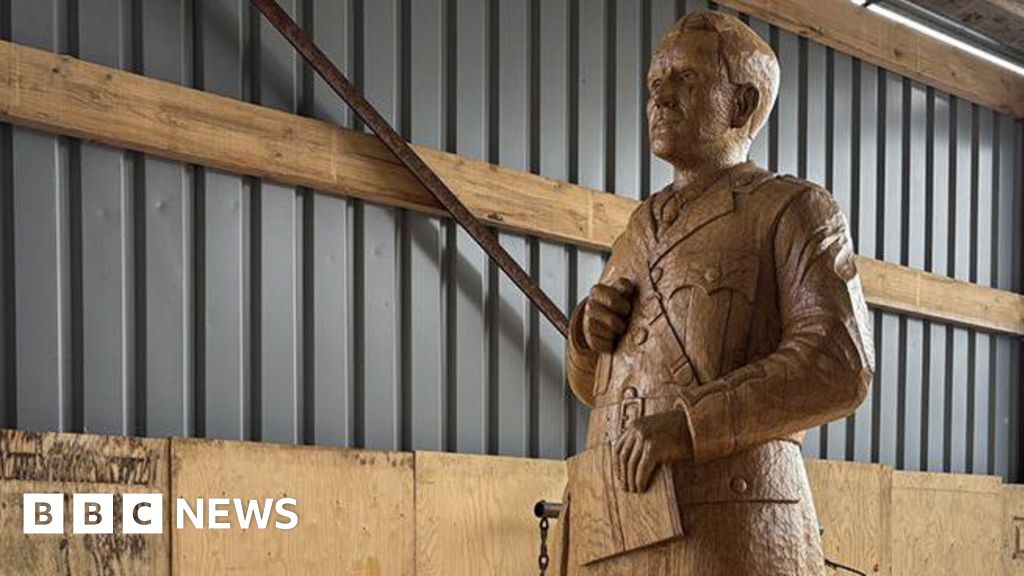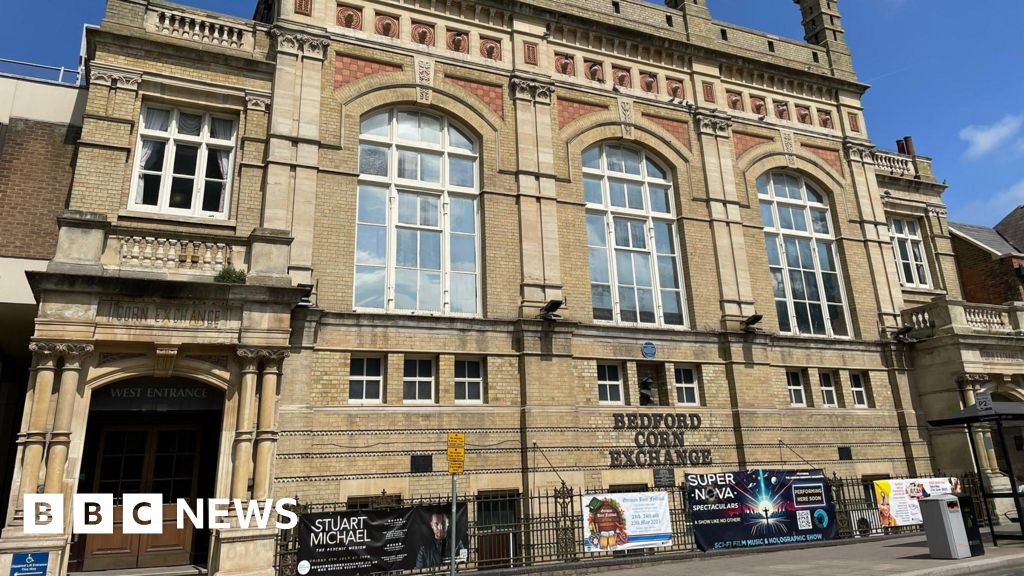- Politics
The Netherlands returns 119 stolen sculptures to Nigeria
时间:2010-12-5 17:23:32 作者:U.S. 来源:Politics 查看: 评论:0内容摘要:For Ukrainian soldiers fighting along the 1,000-kilometer (600-mile) front line, the theatricality of the week’s political developments stood in harsh contrast with the grinding war.For Ukrainian soldiers fighting along the 1,000-kilometer (600-mile) front line, the theatricality of the week’s political developments stood in harsh contrast with the grinding war.
Ashaninka Indigenous children play with a ball in the Apiwtxa village, near Marechal Thaumaturgo city, Acre state, Brazil, Saturday, June 22, 2024. (AP Photo/Jorge Saenz)In 2015, the Amazon Fund granted the Apiwxta Association, led by the Piyãko clan, $2.2 million to improve agroforestry in its territory and extend the experience to other Indigenous tribes and riverine communities. It was the first time that the fund, backed mostly by Norway but also by the U.S. and other countries, financed an Indigenous organization.

The next year, Isaac Piyãko, brother of Wewito and Francisco Piyãko, was elected mayor of Marechal Thaumaturgo, a town of 17,000 people, mostly non-Indigenous, historically run by business owners who profited from rubber-tapping and families with ties to logging and cattle ranching. It was the first, and so far only, time that an Indigenous leader had become a mayor among the 22 municipalities of Acre state. In 2020, Piyãko was reelected.Francisco said the Ashaninka leader’s candidacy was based on the same principle as OPIRJ’s project: to spread their experience to the entire region, including non-Indigenous areas. One of the Apiwtxa’s projects that became municipal policy under Isaac has been the purchase of local school meals from small farming families, thus reducing industrialized products such as canned sardines brought from thousands of kilometers (miles) away.Apolima-Arara leader Jose Angelo Macedo Avelino sings in Nordestino village, Acre state, Brazil, Monday, June 24, 2024. (AP Photo/Jorge Saenz)

Apolima-Arara leader Jose Angelo Macedo Avelino sings in Nordestino village, Acre state, Brazil, Monday, June 24, 2024. (AP Photo/Jorge Saenz)Despite that success, climate change has impacted local production, making it one more issue the Ashaninka must confront. Last year, during record drought in the Amazon, the Amonia River’s water was so warm that for the first time the Ashaninka stopped bathing in it and thousands of fish died. This year, Amazon communities are again suffering from widespread drought.

“The culprits for this live far from us,” said Francisco, speaking about climate change, which historically industrialized nations have been most responsible for. “But if we start pointing fingers, we’ll waste a lot of energy and solve nothing. Instead, we’re focusing on adaptation. We’re identifying the best places to build houses and grow crops, improving access to water and managing fire risks.”
Another beneficiary of the OPIRJ project is the Apolima-Arara territory. It is located in a stretch of the Amonia River between Apiwtxa and Marechal Thaumaturgo and is one of Brazil’s most recently demarcated Indigenous lands. President Luiz Inácio Lula da Silva signed its designation into law in April 2023, following a two-decade struggle for recognition.“The customs and culture of Papuans, especially those of us in Enggros village, is that women are not given space and place to speak in traditional meetings, so the tribal elders provide the mangrove forest as our land,” Merauje said. It’s “a place to find food, a place for women to tell stories, and women are active every day and earn a living every day.”
The forest is a short 13 kilometers (8 miles) away from downtown Jayapura, the capital city of Papua, Indonesia’s easternmost province. It’s been known as the women’s forest since 2016, when Enggros’ leader officially changed its name. Long before that, it had already been a space just for women. But as pollution, development and biodiversity loss shrink the forest and stunt plant and animal life, those in the village fear an important part of their traditions and livelihoods will be lost. Efforts to shield it from devastation have begun, but are still relatively small.Petronela Merauje sits in a boat as Paula Hamadi, right, stands chest deep in water as she collects clams in a mangrove forest where only women are permitted to enter in Jayapura, Papua province, Indonesia on Wednesday, Oct. 2, 2024. (AP Photo/Firdia Lisnawati)
Petronela Merauje sits in a boat as Paula Hamadi, right, stands chest deep in water as she collects clams in a mangrove forest where only women are permitted to enter in Jayapura, Papua province, Indonesia on Wednesday, Oct. 2, 2024. (AP Photo/Firdia Lisnawati)One early morning, Merauje and her 15-year-old daughter took a small motor boat toward the forest. Stepping off on Youtefa Bay, mangrove trees all around, they stood chest-deep in the water with buckets in hand, wiggling their feet in the mud to find bia noor, or soft-shell clams. The women collect these for food, along with other fish.
- 最近更新
- 2025-07-07 05:45:46In Brazil, a fight over offshore drilling tests Lula’s climate ambitions
- 2025-07-07 05:45:46Suicide bombing attack on church in Syria
- 2025-07-07 05:45:46Human remains found in search for missing woman
- 2025-07-07 05:45:46Hurricane Erick approaches Pacific coast, threatens Mexico with flooding
- 2025-07-07 05:45:46Iran’s president joins Tehran protest condemning US, Israel
- 2025-07-07 05:45:46Warning over TikTok food sellers not listing allergens
- 2025-07-07 05:45:46Brazil’s Bolsonaro accused in spy agency case as coup trial is ongoing
- 2025-07-07 05:45:46South Korea's president is out - but he leaves behind a polarised country
- 热门排行
- 2025-07-07 05:45:46Best high-yield savings accounts of 2025: AOL editor picks
- 2025-07-07 05:45:46One death every seven minutes: The world's worst country to give birth
- 2025-07-07 05:45:46L’Oréal Revitalift Hyaluronic Acid Face Serum
- 2025-07-07 05:45:46“Will Israel accept” Iran if it’s not a nuclear threat?
- 2025-07-07 05:45:46Telematics car insurance: Is the discount worth sharing your driving data?
- 2025-07-07 05:45:46Call to identify scenes captured by Secret Painter
- 2025-07-07 05:45:46Key differences between saving and investing your money
- 2025-07-07 05:45:46Could Nigeria's careful ethnic balancing act be under threat?
- 友情链接
- Amid US-Pakistan thaw, two key challenges: Iran and China Niger to nationalise uranium mine operated by French state-affiliated firm Syria church bombing kills 25, dozens wounded Clashes injure 11 as Kenyans protest death of blogger in police custody Lake Chad Basin: Violence and displacement Why India refused to join SCO condemnation of Israel’s attacks on Iran The woman raising 98 children with disabilities in Uganda “Will Israel accept” Iran if it’s not a nuclear threat? DR Congo and Rwanda to sign peace agreement on June 27 US attacks Iran: How Trump rejoined ‘team’ Netanyahu Boeing CEO cancels airshow visit as investigation starts on India crash .css-v2kfba{height:100%;width:100%;} Senior Trump officials say US attacks on Iran ‘not about regime change’ US bombs Iran: What we know about US strikes on Iran’s nuclear facilities Is Trump planning an ‘Africa visa ban’? Lone survivor of Air India crash mourns brother India says it will ‘never’ restore Indus Waters Treaty with Pakistan Pakistan to nominate ‘genuine peacemaker’ Trump for Nobel Peace Prize Devi Khadka: The woman leading the fight against wartime sexual violence Pakistanis flee Iran amid Israel-Iran war border closure Kenya police officer arrested over blogger’s death in custody Iran-Israel conflict raises alarm in Pakistan amid fears over own security Markram and Bavuma put South Africa on verge of WTC win against Australia Ten-man Real Madrid beat Pachuca 3-1 for first win of Club World Cup Guardiola wants more after Man City thump Al Ain at Club World Cup Thunder beat Pacers in Game 7 to bring first NBA crown to Oklahoma City Devi Khadka: The woman leading the fight against wartime sexual violence The Netherlands returns 119 stolen sculptures to Nigeria Iran warns US of consequences after strikes, says Trump betrayed his voters Iran-Israel conflict raises alarm in Pakistan amid fears over own security
